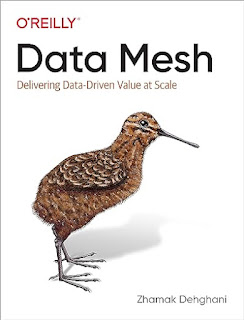
|
| Software Engineering Series |
Paraphrasing a saying attributed to Lao Tzu, "a journey starts with a look inward". Of course, there are also people walking just for the sake of walking, without a purpose or afterthought, though usually when we follow a path we ask ourselves: where we are? what's the destination? how long is the road? how much it takes to reach the intermediary and final goals? what do I need for the road? what can I find on the road? what else do I need to know? who can help me? with whom or what can I travel? does the journey make sense? am I missing something? am I fit for the road and obstacles ahead? what challenges I might meet?
The traveler's metaphor can be easily applied to the professional life as well, especially when one reached a junction or a point on which a decision must be made about the road ahead. Usually, the first step is being aware where one is, and this applies from all points of view: geographical, physical, mental, spiritual, social and even ideological or religious. Of course, not everything is equally important, and it depends on each individual's values, state of mind, situation in life, etc. The more dimensions one considers into the equations of life, the more challenging it is to find a solution, even if not optimal. Even if some things can be ignored, the overall texture can become quite complex, more complex than our linear way of thinking allows us to cope with!
It would be great if one could always choose what's the destination! Unfortunately, the destination is available based on a serios of variables we are constrained to: our capabilities and knowledge, our experience, the work ahead, on what others want to achieve, and this can change from day to day according to the priorities set. Ideally, we should be aware of all the strings attached to us, respectively which strings are pulled and who's pulling the strings, however life is usually at least one step ahead of us! The lower we find ourselves in the texture that decides upon our life, the more challenging it becomes. Ideally, we should have no attachment to things, situations, people or other material things. However, we aren't hermits living in a cave!
Once we set a destination, is important to consider what one needs for the road, respectively for reaching the intermediary steps. That's probably one of the most challenging aspects of all experience. How can I prepare one for the road not taken? The past is probably the only one that can offer a sense of the future, though what if the future doesn't resemble the past in many essential points? One can always make jumps of faith, though faith alone is not enough! Blind faith without knowledge or wisdom can one bring in the opposite or other wrong directions. One can but try to map the territory and establish a plan, however the contact with reality can be harsher than one can imagine. One can but try to adapt, though one must be built for this! Some fundament must be already there!
A good recommendation for the road ahead is to expect the unexpected. Planning is good for preparing the mind, though what one finds on the way might be surprising as well challenging to overcome. Harsh long-distance journeys are not for everybody! Starting small and training the qualities needed for such journeys might be the best advice one can get. Though, the beginning of wisdom takes more steps than this, no matter the road, no matter the experience or one’s aims!

















